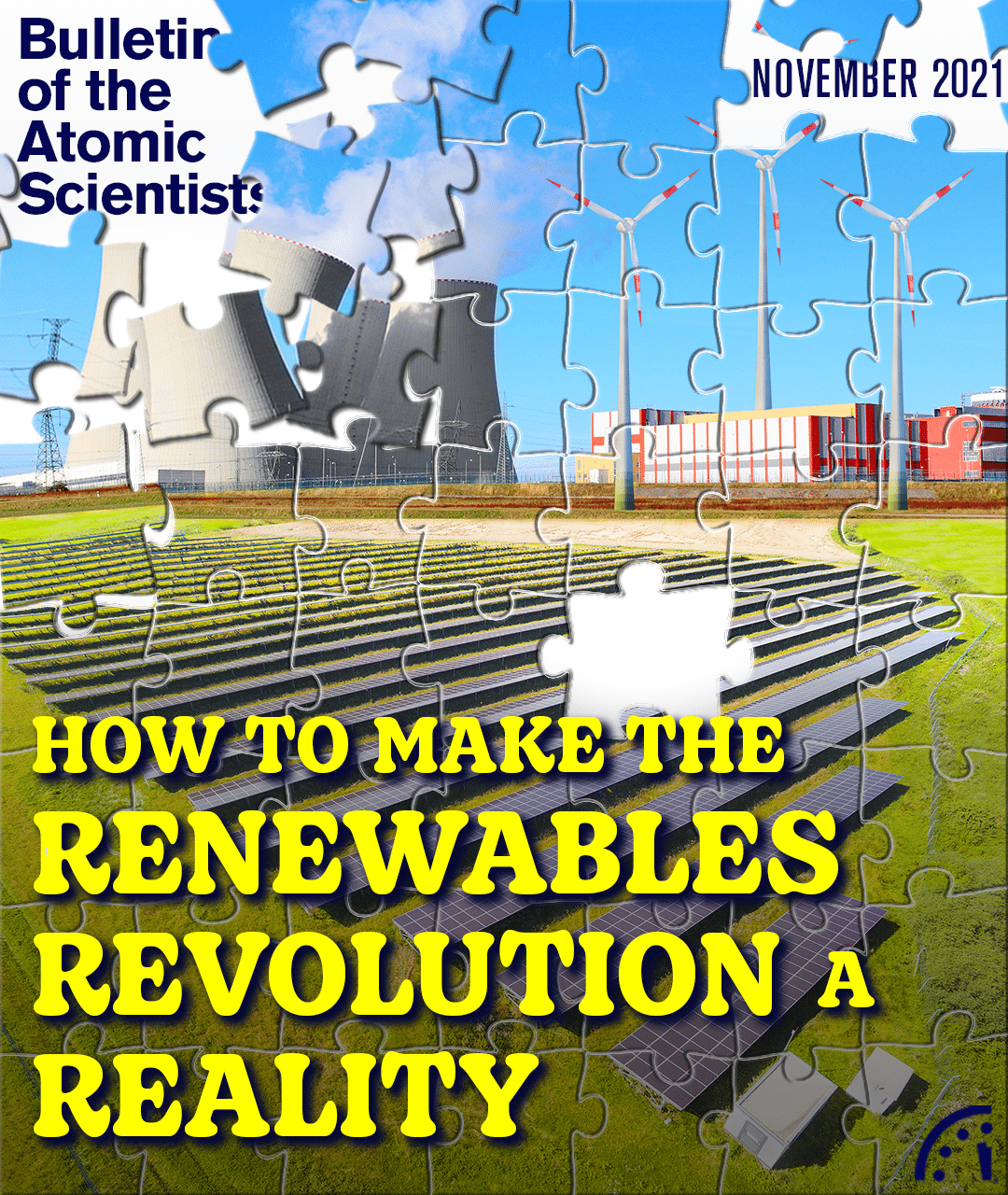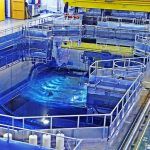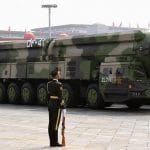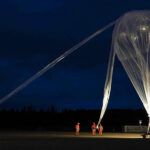Fusion’s role in fighting climate change
By Robert J. Goldston, Jacob A. Schwartz | November 15, 2021
Fusion’s role in fighting climate change
By Robert J. Goldston, Jacob A. Schwartz | November 15, 2021
Excitement about fusion energy is growing. The international ITER project in France, which counts China, India, Europe, Japan, Russia, South Korea, and the United States as its partners, is starting to assemble the world’s most powerful fusion experiment. It is designed to produce 10 times more fusion power, in the form of heat, than the power injected into the fuel. Consequently it will approach what is required for a practical fusion power plant—producing 25 to 30 times more fusion power than the power put in. Meanwhile, about $2 billion of private capital has flowed into fusion R&D, some focused on accelerating the development of ITER-like configurations, and some focused on alternative approaches to fusion.
In this context, the National Academies has recommended that the United States aim to have a fusion pilot plant put electricity onto the electrical grids sometime between 2035 and 2040. This would be a major step forward for this technology, with the goal of demonstrating that fusion has all the features needed to be a practical source of power, in the real world.
Since the time of the National Academies report, the National Ignition Facility in California has made a major advance in its own performance, producing nearly as much power (in the form of fusion heat) as the power delivered to the target (in the form of energy coming in from a laser), while a private company has demonstrated a fusion-relevant magnet operating at a 70-percent higher field than used in ITER.
Even with the latest successes in the lab, however, it will take time to build out a new energy infrastructure, so it is unlikely that fusion will contribute in a major way to President Biden’s goal of decarbonizing US electrical energy production by 2035. However, over the time period between 2035 and the end of the century, the worldwide demand for energy is expected to climb fourfold, with growth concentrated in the developing world. To meet this demand while not driving global warming, low-carbon energy sources will need to be used on a growing scale. Because of fusion’s intrinsic characteristics, it is well suited to complement wind and solar in this time frame, particularly if we look beyond US shores—and also at the production of non-carbon fuels.
Why fusion?
One way to help eliminate carbon emissions and thereby fight global warming may be to exploit fusion, the energy source of the sun and stars. The production of energy from fusion entails controlling very hot gasses, so hot that the electrons are knocked off of their atoms, forming a gas of positively charged nuclei and negatively charged electrons called a plasma. For practical amounts of fusion to be produced on Earth, the temperature of this plasma must be in the range of 150 million degrees Celsius—despite claims about so-called “cold” fusion that have proven incorrect.[1]
The easiest way to make fusion energy is to use nuclei with low electrical charge, in particular forms of hydrogen, which have the smallest nuclear charge—the charge of a single proton. This way the nuclei repel one another minimally, so they can most easily approach close enough to fuse. The forms of hydrogen with the highest reaction rate are deuterium (containing one proton and one neutron) and tritium (containing one proton and two neutrons). Tritium does not exist in nature, so it must be produced in the fusion power plants themselves. However, the basic fuels, deuterium and lithium, are abundantly available.
One major advantage[2] of using fusion as an energy source is that its underlying physics precludes either a fuel meltdown—such as what happened at Three Mile Island and Fukushima Daichi—or a runaway reaction, such as at Chernobyl. Furthermore, the amount of radioactive material that could be released in an accident in a fusion power plant system is much less than in a fission reactor. Consequently, a fusion system has much less capability to damage itself, and any damage would have much less dangerous consequences. As a result, current concepts for fusion systems may not necessitate an evacuation plan beyond the site boundary.[3]
Another advantage of fusion is that neither the fuel nor its products create the very long-lived radioactive waste that fission does, which means that fusion does not require long-term, geological storage.[4]
Fusion also presents low proliferation risks compared with fission. Since there is no need for uranium or plutonium in a fusion power system, these required components of nuclear weapons need not be present at all. It is possible to produce weapons-usable materials using neutrons from the deuterium-tritium fusion reaction, but this would be easy to detect.[5]Tritium is used to “boost” the reactions in advanced nuclear weapons. It cannot be used without uranium or plutonium, however, so it is not a primary proliferation risk. (Nonetheless, tritium should be carefully controlled and accounted, and measures of surveillance and containment should be applied, as tritium is produced and consumed in a deuterium-tritium, or DT, fusion system.)
Where does fusion research stand now?
The most basic requirement for a fusion power system is that it must produce much more energy than is required to maintain the very hot plasma. In the temperature range of interest, the ratio of power produced to power required depends on the pressure, p, of the plasma multiplied by the time, τ, over which energy injected into the plasma is confined there. As the product of these two factors, pτ, rises, eventually some or nearly all of the heat required to sustain the plasma is provided by the charged products from the fusion reaction itself, allowing external heating to be turned far down. Thus, pτis a key scientific yardstick for progress in fusion R&D.
The pτ product required at the center of a commercial DT fusion plasma is about 30, for example six times the pressure of air at sea level, with the energy in the plasma being replaced every five seconds. This sounds modest, but it must be achieved at a temperature in the range of 150 million degrees Celsius. The reaction between protons and boron, which is attractive because it does not require tritium and does not produce neutrons, requires about 1,000 times greater pτ, at a temperature ten times higher than needed for DT, making it much more challenging to employ.
Physicists are exploring two classes of systems for confining hot plasmas: those that operate nearly continuously and use magnetic fields (Magnetic Confinement Fusion); and those that operate in short pulses, using the inertia of the hot fuel to hold it briefly in place (Inertial Confinement Fusion).
The tokamak configuration, which looks like a doughnut stuffed with a magnetic field, holds the record for pτ in a magnetic confinement device, about two. Using DT fuel, tokamaks have produced 10 megawatts of fusion heat for about a half-second. The ITER project under construction in France is designed to produce 400 to 500 megawatts of fusion heat, 10 times the input of power to the fuel, for periods of at least 400 to 500 seconds. While it will approach the conditions for commercial fusion power production, it will not turn its fusion heat into electricity. For a practical magnetic-confinement fusion system, 25 to 30 times more heat must be produced by fusion than is injected into the fuel, and the heat produced must be converted to electricity.
A similar magnetic-confinement system under development with public funding is the stellarator, which looks more like a cruller than a simple doughnut. It offers stronger plasma control than the tokamak, but needs more complex magnets. Indeed, simplifying stellarator magnets is a major focus of research. This system[6] has to date reached a pτ of about 0.2, with the same goal as tokamaks of about 30.
In the private arena, the companies Commonwealth Fusion Systems and Tokamak Energy are both focused on developing advanced magnets to reduce the size and capital costs of future tokamaks, as compared with ITER. Commonwealth Fusion Systems has recently announced the achievement of a very high magnetic field,[7] 70 percent higher than used in the ITER design. This much higher magnetic field should increase pτ in a tokamak of a given size by a factor of five[8], which is very promising. Stellarators are also being pursued with private funding by the companies Renaissance Fusion and Type One Energy.
Multiple companies[9] are pursuing simpler magnetic confinement systems than tokamaks, with less external control over the plasma. These in general are projected to produce less-expensive fusion power systems with a less-expensive—and so in principle quicker—path to fusion power. However, they have achieved[10] much lower values of pτ, a few thousand times lower than current tokamaks.
Inertial confinement fusion was conceived as soon as lasers were invented. The idea is to compress and heat a small pellet of frozen DT fuel to the point where the resulting fusion burn greatly exceeds the input energy. A series of lasers of growing energy led to the construction of the National Ignition Facility (NIF), whose recent results have made headlines. Meticulous efforts at the NIF have reduced asymmetries in the pellets and in the laser drive that can spoil the compression, ultimately leading to a single shot (as of the time of this writing) that produced about 70 percent as much fusion energy as energy in the laser light entering the target.[11] This is a major accomplishment, for which the NIF team deserves congratulations. It brings the NIF close to the original goal for which it was constructed: to allow study of aspects of nuclear weapons without underground testing. This major milestone may invigorate the pursuit of inertial confinement for fusion power. The scale of the scientific goal, however, is such that an inertial fusion energy system would need to produce about 150 times more fusion energy than a compression laser delivers.
(There is an intermediate concept called “magneto-inertial” fusion, in which a magnetically confined plasma is rapidly compressed to higher density and temperature.[12] One can anticipate that it will be difficult to control the plasma during such compression, but no recent experimental results are publicly available. One company, General Fusion, has announced plans to build a demonstration power plant in the United Kingdom.)
There are also engineering challenges facing both magnetic and inertial fusion concepts. In both, it is necessary to mitigate high fluxes of heat to material surfaces, withstand high neutron fluxes, and produce tritium. A key issue for tokamaks and stellarators is to raise the field—and reduce the cost—of magnets. For inertial fusion, the lesson from the NIF is that extremely precisely manufactured targets will need to be injected into a reaction chamber, and compression drivers will be required to hit these targets with extreme precision. This will need to occur about ten times per second.
When and how can fusion contribute to mitigating climate change?
Private companies are in a hurry to develop fusion, and many say that they will be able to put commercial fusion power on the US electric grid in the early 2030s. The total private financing in this sector is impressive, at about $2 billion. Some of these companies argue that their systems are much simpler and cheaper than tokamaks or stellarators—the approaches favored by public financing—so the large gap in pτ can be bridged quickly. Other firms say that their innovations for tokamaks or stellarators will speed the development of these systems. After looking over the state of publicly and privately funded fusion research, the National Academies recommended[13] that the United States embark upon a program[14] to develop multiple preliminary designs for a fusion pilot plant by 2028, with the goal of putting a modest amount of net electricity on the US electrical grid from a pilot plant starting sometime in the years between 2035 and 2040, use the pilot plant to study and develop technologies for fusion, and have a first-of-a-kind commercial fusion power plant operational by 2050. The United Kingdom has recently announced a plan to build a prototype fusion power plant by 2040.[15] China has a plan to begin operation of a fusion engineering test reactor in the 2030s, while the European Union foresees operation of a demonstration fusion power plant in the 2050s.
Even under the aggressive schedule of the private sector, the time required to build out a new energy infrastructure is such that fusion will not contribute in a major way to President Biden’s goal[16] of decarbonizing US electrical energy production by 2035. Consequently, we must look beyond the 2035 timeframe to see how fusion can make a major contribution, and how it can complement renewables. We should also look beyond the confines of the United States, and beyond only electrical energy production.
World electrical energy consumption is projected to quadruple between 2035 and 2100, and the new energy production required to meet it must not release carbon dioxide into the atmosphere. Consequently, providing low-carbon electricity in the world market, including later in the century, is of great importance for holding climate change at bay. Furthermore, in addition to generating electricity, fusion can also contribute low-carbon heat for the production of hydrogen or carbon-neutral liquid fuels.[17] This is a major focus of the Kyoto Fusioneering company.
The cost of solar and wind electricity has fallen dramatically, so for fusion to be successful it will need to be integrated into a world energy economy that contains a large proportion of renewable energy[18]. But the sun does not always shine, nor does the wind always blow, so solar and wind power vary over timescales of hours, weeks, and months. Electrical energy storage will likely become available to smooth out daily variations in sun and wind. But a very large battery, or the equivalent, that only discharges its energy on a seasonal basis is not likely to be practical—and locations for very-large-scale efficient energy storage such as pumped reservoirs or pressurized caverns are limited. Furthermore, as renewable energy grows, the best sites will become occupied and developers will be forced to turn to sites with more variability, poorer grid connection, more difficulty in achieving public acceptance, or simply less sunlight or wind, making complementary energy systems even more important.
Fusion may offer a solution. This low-carbon energy source could complement the weekly and monthly variations of wind and solar, because it can provide reliable, so-called “dispatchable” electrical power capacity, one that can be turned on during periods of lower renewable power production, or higher demand. Grid operators are already beginning to pay for such electrical capacity, rather than only megawatt hours, and regulators are enabling such payments. This is similar to paying for the speed of your internet connection, rather than for each byte of information you receive. Such capacity-based costing will be a growing benefit for capital-intensive systems like fusion, as the market penetration of intermittent renewables grows.
None of this is an argument against growing renewables and adding energy storage to help meet President Biden’s goal, but simply to make the point that there will be an important role for reliable low-carbon electrical capacity such as fusion, as renewable energy sources expand to fill a large part of electrical needs, and electrical power needs grow. Systems like fusion could be called upon to integrate with renewables by providing electricity with weekly or seasonal variation. And fusion systems could use the weeks or months of high renewable electrical power to produce hydrogen or liquid fuels for transportation and to perform maintenance.
Turning to the world energy market, the intrinsic characteristics of fusion may give it an advantage in the currently less-developed regions of the world, where the greatest growth in electrical energy demand is anticipated.[19] While fusion systems will require a strict safety regime, the consequences of a misstep are much less than for fission. Similarly, the problems associated with a large expansion in the need for geological storage of radioactive waste are not encountered for fusion. Finally, the proliferation risks of uranium enrichment and of plutonium in used fuel will not be encountered. This suggests that there could be a significant market for fusion, in parallel with growing renewables, in the developing world.
The cost of fusion is a key uncertainty in this analysis. As we have seen, the tokamak is the magnetic confinement system closest to realization. One could imagine using the ITER project as a benchmark for the cost of a large tokamak. It is difficult, however, to assess the cost of the ITER project, because in-kind components are being supplied by the international partners much more than cash. Furthermore, the cost and complications of an international collaboration building a first-of-a-kind device, with first-of-a-kind regulation, has added expense. If the new magnets being developed by private companies permit much higher magnetic fields, this could allow smaller and less expensive tokamak or stellarator systems. If one or more of the other configurations discussed here is able to leap forward in pτ quickly, these systems are likely to have cost advantages. With the new results from the National Ignition Facility, inertial confinement fusion may be in the running as well.
Public-private partnerships can be an important contributor to the path forward for fusion, combining the scientific and technical knowledge that is continually being advanced through public funding with the financial resources and focus on cost and schedule provided by private funding.[20] The goal of publicly funded research is to provide the much-needed science and technology to assure that fusion can be an available option, while private funding is focused on developing the intellectual property and know-how to bring specific implementations of fusion to fruition as soon as practicable.
In summary, fusion has been advancing rapidly both in the public and private sectors. While fusion is unlikely to make a major contribution to President Biden’s goal of decarbonizing US electrical energy production by 2035, there are goals beyond 2035 to keep in mind—including goals beyond US shores, and beyond electrical energy production. Fusion has favorable intrinsic characteristic for meeting these goals, complementing renewables. If fusion energy development is not pursued now, it will not be available when it may be needed to enable a cooler and more equitable planet.
Endnotes
[1] See https://www.nature.com/articles/d41586-019-01683-9
[2] See https://thebulletin.org/2018/04/why-fusion-2/
[3] See https://www.gov.uk/government/consultations/towards-fusion-energy-proposals-for-a-regulatory-framework
[4] See https://scientific-publications.ukaea.uk/wp-content/uploads/UKAEA-RE2101-Fusion-Technology-Report-Issue-1.pdf
[5] See https://iopscience.iop.org/article/10.1088/0029-5515/52/4/043004/meta
[6] See https://doi.org/10.1038/s41586-021-03687-w
[7] See https://news.mit.edu/2021/MIT-CFS-major-advance-toward-fusion-energy-0908
[8] See https://doi.org/10.1088/ 1361-6587/abcdfc
[9] See https://www.fusionindustryassociation.org
[10] See https://arxiv.org/abs/2105.10954
[11] See https://www.llnl.gov/news/ national-ignition-facility-experiment-puts-researchers-threshold-fusion-ignition
[12] See https://generalfusion.com/ research-library/
[13] See https://www.nationalacademies. org/our-work/key-goals-and-innovations-needed-for-a-us-fusion-pilot-plant
[14] See https://thebulletin.org/2021/04/national-academies-calls-for-a-fusion-pilot-plant/.
[15] See https://www.gov.uk/government/publications/towards-fusion-energy-the-uk-fusion-strategy
[16] See https://www.whitehouse.gov/briefing-room/statements-releases/2021/04/22/fact-sheet-president-biden-sets-2030-greenhouse-gas-pollution-reduction-target-aimed-at-creating-good-paying-union-jobs-and-securing-u-s-leadership-on-clean-energy-technologies/
[17] See https://doi.org/10.1016/ j.fusengdes.2010.12.011
[18] See https://doi.org/10.1016/j.egycc.2021.100046
Together, we make the world safer.
The Bulletin elevates expert voices above the noise. But as an independent nonprofit organization, our operations depend on the support of readers like you. Help us continue to deliver quality journalism that holds leaders accountable. Your support of our work at any level is important. In return, we promise our coverage will be understandable, influential, vigilant, solution-oriented, and fair-minded. Together we can make a difference.























The author wrote “where does fusion research stand now?” For context, remember that the public has been besieged by optimism, wishful thinking, and unfulfilled promises for seven decades. This decade will be different? “C’mon Charlie Brown,” says Lucy. “I promise I’ll hold the football for you and I won’t pull it away just before you try to kick it.” Sorry, I’m not falling for it. Fortunately, science provides an excellent tool to separate fact from fantasy: the experiment. The best experimental results stand today in the same place they were 24 years ago. On Oct 31, 1997, JET experiment #42976… Read more »
Great comment from Mr. Krivit. I add these thoughts: (1) The authors quote fusion entrepreneurs’ public-facing claims of imminent commercialization as if they meant something, but given this field’s history of overpromising and the many technical challenges of making grid-scale power from fusion even if abundantly net-positive reactions are assumed, this is absurd. Nobody has yet extracted enough net energy from controlled fusion to light a cigarette. A heavy burden of proof therefore lies upon those claiming imminent real-world relevance — a burden not yet eased by a particle of tangible evidence. Industry’s self-promoting announcements hardly deserve mention, much less uncritical… Read more »
Very healthy reaction from Steven Krivit and Larry Gilman They talk about the fable of the hare and the tortoise, but we could cite the one about selling the skin of the bear, before having killed it. There is also some basic problems, which seem to have been overlooked. The famous mass defect at the basis of all the excitement for fusion, actually depends on the knowledge of he mass of the neutron, in the nuclei. Very strangely for a supposedly serious Theoretical Physics, this mass has never been measured directly! in 100 years! Amazing! . It has always been… Read more »
Let me add a kind of heuristic thought. If you think of fission, it was discovered in 1938 and by 1942 Fermi had a working pile. But it still took about thirty more years to get to practical large-scale nuclear power plants. We knew about the fusion reactions before fission, but nearly a century late we have yet to get to the fusion equivalent of the Fermi pile. Fusion is a much harder nut to crack. If we ever do, the fission experience suggest the additional time to a commercial full-scale fusion power plant would be many times the thirty… Read more »